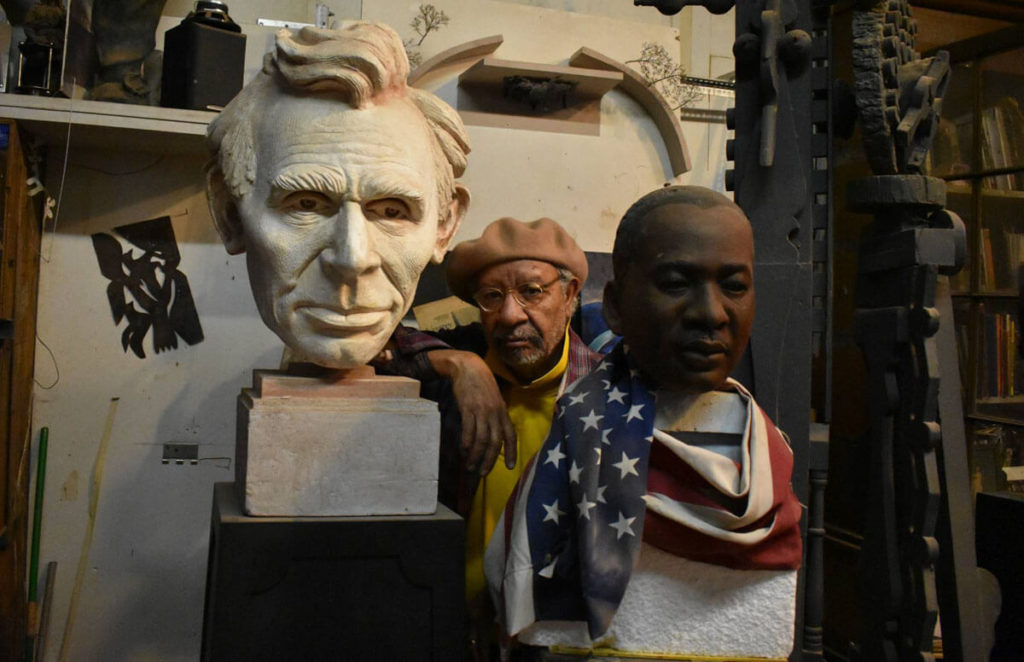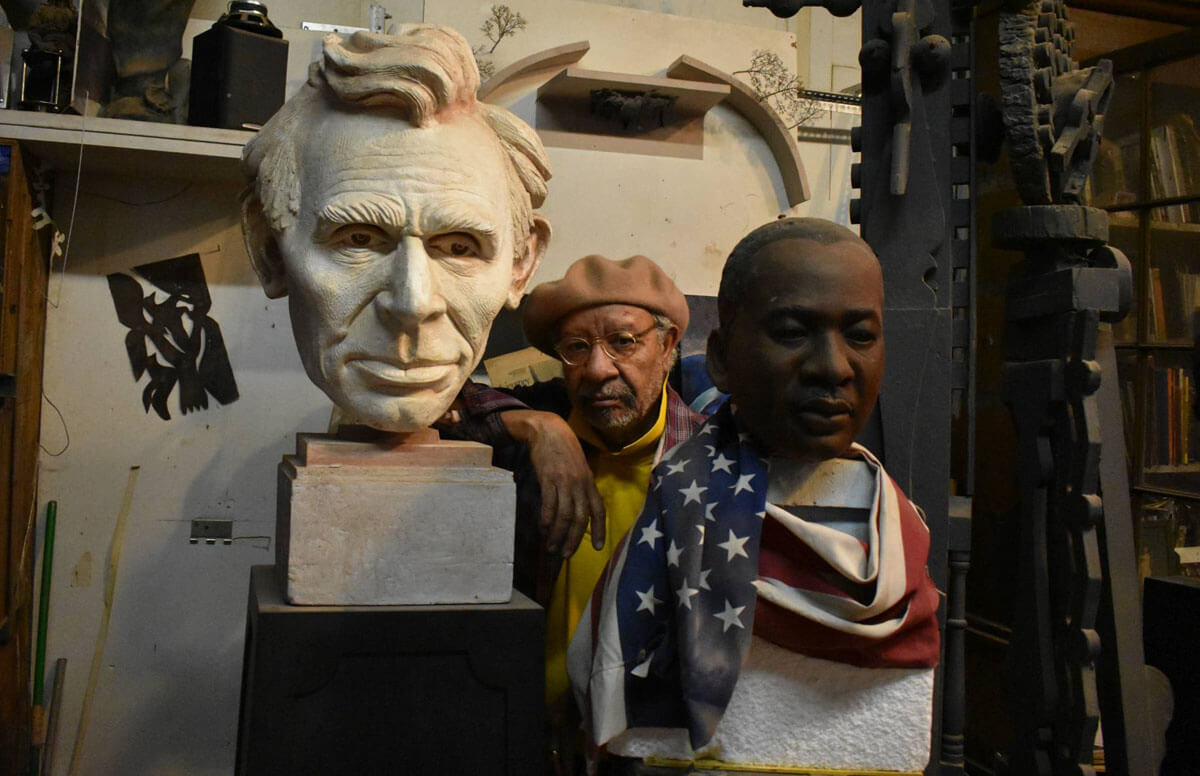by Mark Ray. This article originally appeared on Next Avenue.

The ongoing debate over whether to remove Confederate statues in the South (and beyond) demonstrates how public art highlights what a society finds significant. By that measure, Ed Hamilton was pretty insignificant when he was growing up black in the 1950s and 1960s.
All the public art he saw around him in his hometown of Louisville, Ky. depicted white people: Abraham Lincoln at the library, Louis XVI at the courthouse, Henry Clay at city hall. Even the mannequins in downtown department stores were white.
“If you lived in the South, what did you encounter?” he says. “You encountered Confederate generals, and the Confederacy had their boot on our necks.”
Despite not seeing himself in public art, Hamilton found himself in sculpture. His high school art teacher, Patsy Griffith, pushed him to apply to Louisville’s Art Center School, where he earned a four-year scholarship. After getting through classes in painting and drawing, Hamilton says, “I worked my way finally into the sculpting studio. Once I got into there, I found myself.”
When he graduated in 1969, Hamilton quickly realized that passion wouldn’t pay the bills. As far as he knew, Barney Bright was the only local sculptor making a living with his art. So Hamilton took a job as an art teacher’s assistant at a local high school, where he taught ceramics and sculpture and began planning a career in education.
The Public Art Track
That all changed one spring day in 1973 when he went to buy art supplies from a shop next to Barney Bright’s studio. As Hamilton sat in his car trying to summon up the courage to knock on the door, Bright came outside to check his mail. Realizing it was now or never, Hamilton got out and introduced himself to the older artist, who invited him in for a tour.
When Bright learned that his young guest had created a piece he’d admired at the Art Center School, he invited him to work on one of his own commissions. As Hamilton recalls, “I went home and told Bernadette (his wife), ‘Guess who I met. Oh, by the way, I won’t be going back to school next year.’”
Over the next decade, Hamilton worked both with Bright and alone. He sculpted numerous liturgical pieces for local Catholic churches — processional crosses, bas-reliefs of the Virgin Mary and other items — and did two series of metal sculptures, which he called Junkology and Confinement.
But fate intervened again in 1983 when the Hampton Institute (now Hampton University) invited him to create a sculpture of African-American leader Booker T. Washington. (An alumnus of the school, Washington taught there before becoming the first leader of what is now Tuskegee University.)
“My problem was, what was I going to show them?” Hamilton says. “Jesus ain’t going to work; Mother Mary ain’t going to work.” So he dove into research (as he does with every representational sculpture), found a photo of Washington he liked and created a bust to show the Hampton committee. They approved his design, and Hamilton spent the next year creating the nine-foot-tall sculpture. It was his largest work to date, and he had to cut a hole in the ceiling of his studio to make room for it.
“That started this whole run of African American imagery,” Hamilton says. “I got another letter from Detroit: Joe Louis. That was a competition; I won that. After Joe Louis came the Amistad Memorial in New Haven, Connecticut. Got that. It just kind of snowballed. I was on this public art track. I guess you could say all else is history.”
‘That Looks Like Me’
Hamilton’s most famous work is The Spirit of Freedom, the centerpiece of the African American Civil War Memorial in Washington, D.C. Dedicated in 1998, it honors the 200,000 free blacks who fought for the Union during the Civil War. Hamilton worked hard to make sure the uniforms of the three soldiers and one sailor were correct, right down to the buttons on their shirts.
But their faces were perhaps even more important. The sculptor likes to tell the story of an African American youth who studied the sculpture carefully, then turned to a woman nearby and said simply, “That looks like me.”
The Spirit of Freedom is among Hamilton’s favorite works, but so is another that honors a forgotten hero.
When Meriwether Lewis and William Clark set out from Louisville to explore the Louisiana Purchase, they took along Clark’s slave, York, as an unofficial member of the Corps of Discovery. York proved valuable to the group when they encountered Native Americans who’d never seen a black man. They saw York as a figure of strength — Clark wrote that he was “big and black as a bear” — not as a slave. Hamilton captured that essence in his heroic statute of York, which overlooks the Ohio River in Louisville.
His Legacy Is Secure
Now 72, Hamilton continues to work; his latest commission is a statue of the late civil rights attorney Julius Chambers for Charlotte, N.C.’s Trail of History.
But he’s also mindful of his age and of his own history. “I’m kind of slowing up a little bit; I’m not as spry as I used to be,” he says. “I don’t relish going up and down the ladder as much anymore.”
Hamilton has also begun lining up new homes for the mountains of books, posters, files, storyboards and models that fill his crowded studio.
His daughter, Kendra, meanwhile, envisions someday turning the building into an art incubator to nurture a new generation of artists. “I’m not trying to check out,” Hamilton says. “But it’s something to look at at this point in life.”
When Hamilton does lay down his tools, he’ll know his legacy as an artist is secure. He’ll also know that future generations of young African Americans will be able to look at public art in his hometown and say, “That looks like me.”
The opinions expressed in this article are those of the author and do not necessarily reflect those of the Diverse Elders Coalition.

